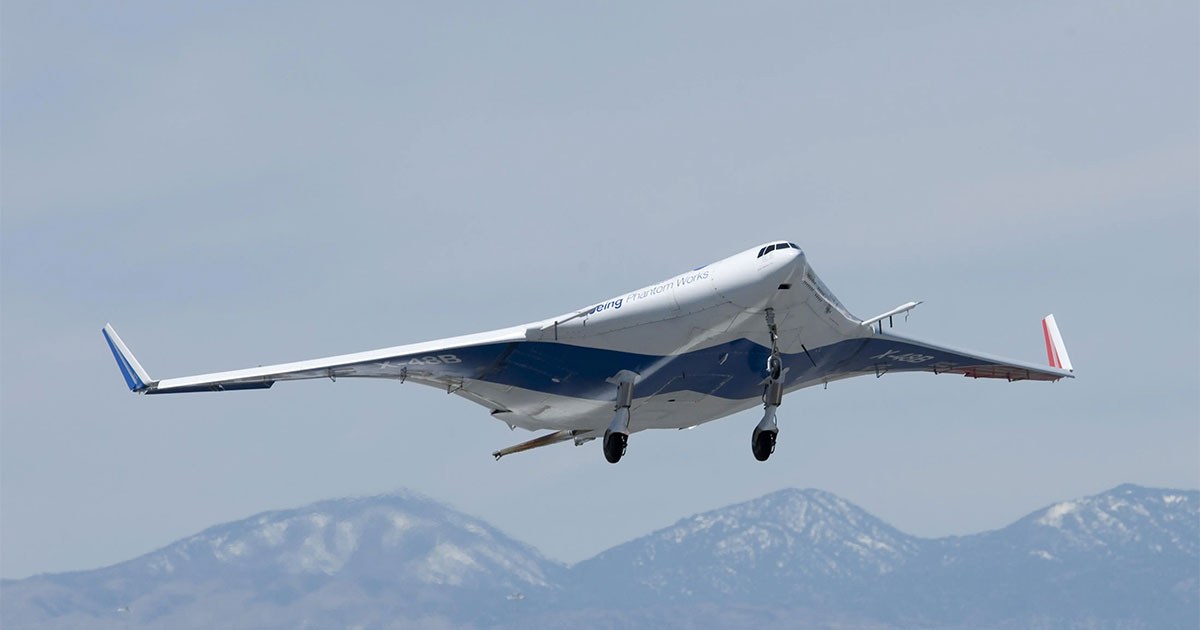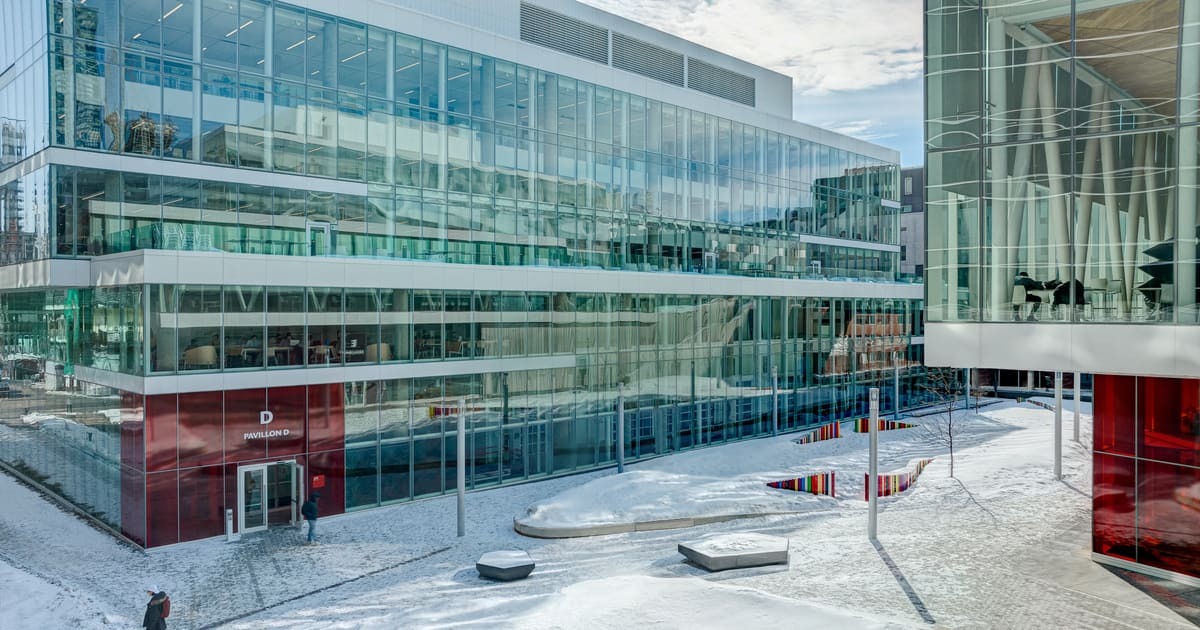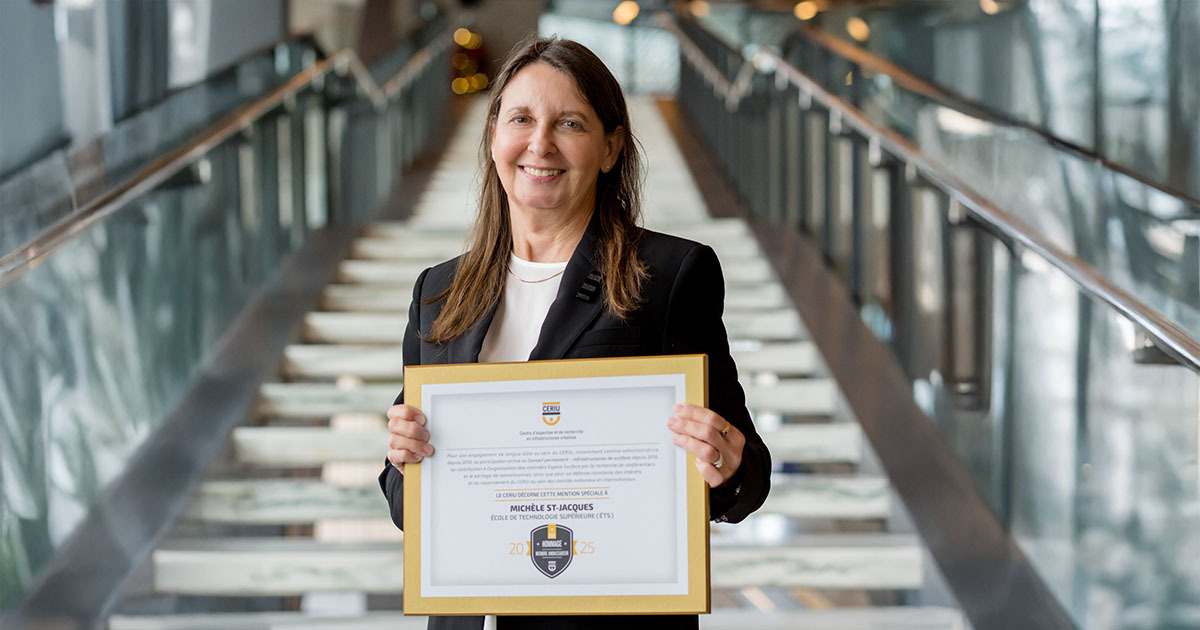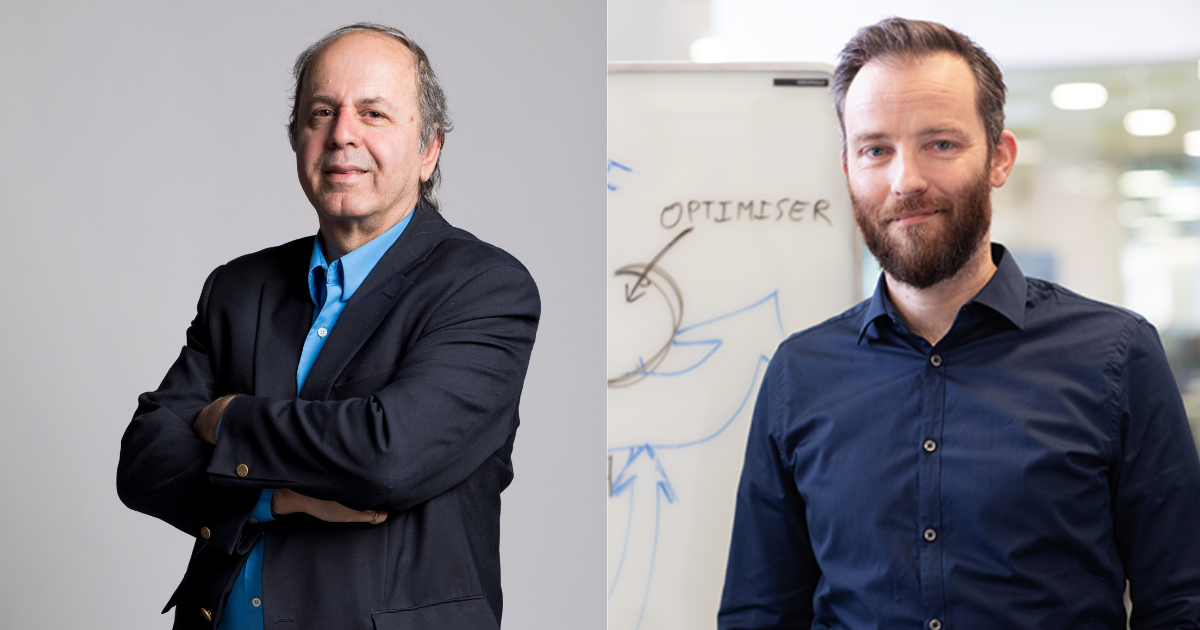
When we think of an aircraft, we usually visualize the classic structure: a central fuselage, either tubular or cylindrical, two wings beneath which are positioned the engines, and a tailplane. In this traditional configuration, the engines are mounted on pylons, distinctly forward of the wings, to benefit from an optimal airflow, undisturbed by the rest of the aircraft. However, this configuration limits the scope for aerodynamic improvement.
Other concepts, such as Blended Wing Body aircraft, offer significant advantages by integrating the fuselage’s contribution to the lift system. This more efficient design could reduce drag by 30% compared with a conventional aircraft. But this also leads to a heavier structure for a similar payload and range. The main challenge for this type of aircraft is also to integrate the engines into the airframe.
A Better Propulsion System for Blended Wing Body Aircraft
In the 2000s, NASA and Boeing developed a Blended Wing Body aircraft, with the engines positioned above the wing, toward the rear of the aircraft. The aim of this configuration was to reduce drag, as well as the noise perceived on the ground during approach and landing phases. This configuration had one major drawback: located well above the aircraft’s centre of mass, the engines, like the wings, generated a downward pitching moment, compromising the aircraft’s balance. With further testing the designers had to add a small tailplane to the configuration.
An aircraft in stable flight must be in a state of equilibrium where the sum of force moments is zero, and that lift compensates for weight and thrust balances drag. However, due to the position of its engines, the aircraft designed by NASA would meet the requirement for equilibrium with difficulty.
To correct this imbalance, the engines should be lowered to align with the centre of mass. But this modification raises another challenge: lower engines would be more exposed to the effects of air viscosity, disrupting flow and reducing their efficiency. This is precisely the problem that Patrick Germain, Professor and Director of the Aerospace Engineering Department at ÉTS, is working on: improving aircraft aerodynamics and performance without compromising engine efficiency.
The aim is to improve the shape of the Blended Wing Body aircraft, using numerical simulations of airflow around the aircraft and engines. By adjusting some 100 geometric parameters, Professor Germain and his team hope to find the best possible configuration through automatic optimization or reinforcement learning.
Flying to Mars: A Technological Challenge
Space exploration reflects one of mankind’s greatest questions: has life ever existed anywhere other than on Earth? Mars is the ideal candidate for this quest, as it is the planet most similar to our own, and has probably harboured water and a warmer, denser atmosphere in the past. Its study could also provide valuable information on Earth’s history.
To better explore the Martian surface, a fleet of autonomous fixed-wing aircraft could prove invaluable. These devices would fly closer to the ground than satellites and move faster than rovers. However, a number of technical hurdles need to be overcome before such a craft becomes a reality.
Air density on Mars is only about 1% of that on Earth, while gravity is about 40%. As a result, lift forces are much lower, making it more difficult to maintain flight. In addition, this very low density would force the propeller to turn faster. As temperatures are extremely low, this higher speed would lead to compressibility effects at the tips of the blades, reducing the efficiency of the propulsion system.
The device would have to be entirely covered with solar panels, as solar energy is weaker on Mars than on Earth, due to its distance from the Sun. And these panels would require heavier structures, which would add weight to the device. A heavier aircraft will need a more powerful engine, which will consume more electricity and therefore require more solar panels… There’s the danger of being locked into a vicious circle here.

Finally, the aircraft’s autopilot would be paramount for the Mars mission: a signal takes between 4 and 21 minutes to travel between Mars and Earth, making remote piloting impossible. Tests on Earth could be carried out using a mock-up, under matching conditions determined through the laws of similitude to reproduce conditions of compressibility and viscosity similar to those present during a flight in Mars’ atmosphere.
Conclusion
Whether it’s improving the efficiency of ground-based aircraft, or designing aircraft capable of exploring other planets, the aerospace challenges are plentiful and exciting. Thanks to advances in numerical modelling and artificial intelligence, innovative solutions are emerging to push back the limits of aerodynamics and propulsion. Tomorrow’s aviation, whether on Earth or on Mars, relies on the ingenuity of researchers, who are devising ever more effective concepts adapted to the challenges of the future.



